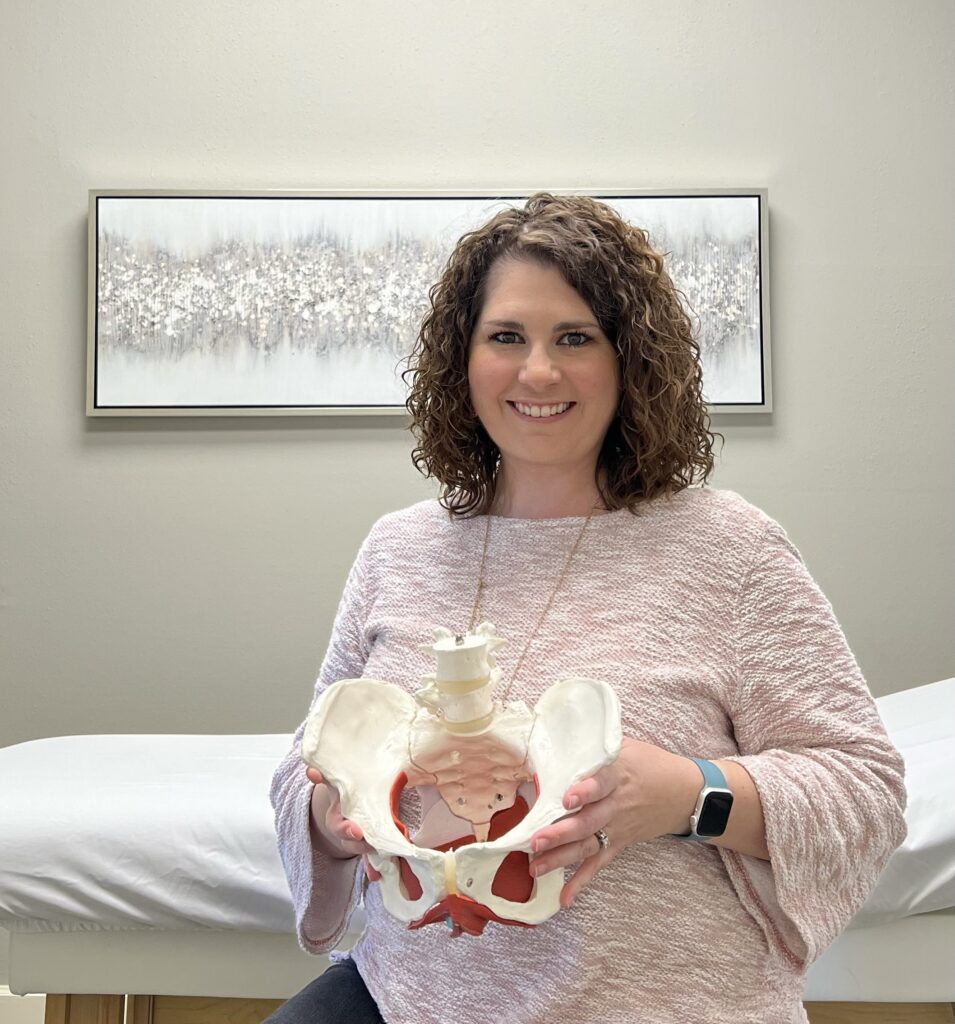Disclosure :: This post is sponsored by Kinetic Physical Therapy.
Motherhood & Incontinence : What You Need to Know!
 Society deems incontinence as a normal part of motherhood. However, this is a misconception. Leaking urine is abnormal and warrants attention.
Society deems incontinence as a normal part of motherhood. However, this is a misconception. Leaking urine is abnormal and warrants attention.
Urinary incontinence is defined as any amount of unintentional loss of urine. The most common type of incontinence, especially during the perinatal period, is stress incontinence. This is the unintentional loss of urine with a physically stressful episode. A “stressful episode” is an increase in pressure in the body that can be caused by a laugh, cough, sneeze, jump, or strain.
About 30-40% of women experience stress incontinence postpartum. Women who deliver via Cesarean section can also experience incontinence symptoms. Leakage is a common occurrence in new mothers, however, it is NOT normal for an adult to leak urine without intention.
The process of urination is an automatic function that involves the bladder, sphincters, urethra, and pelvic floor. These structures work together to store and release urine at appropriate times and locations. The importance of a functional pelvic floor is vital in the role of continence as it provides stability to the pelvic organs and can be trained to voluntarily restrict or allow urine flow. The pelvic floor musculature is responsible for stabilizing the body, especially during stressful episodes, such as a sneeze or cough. If the bladder is holding urine during a stressful episode, leakage will occur if the pelvic floor musculature is not firing correctly.
How do pregnancy and delivery affect the pelvic floor?
- Weight gain can increase the pressure on the pelvic floor, which can cause it to weaken over time.
- Pregnancy can cause a change in pelvic position. This changes the angulation of abdominal and pelvic floor muscle fibers, which may cause suboptimal firing.
- A decrease in abdominal (core) support can increase pressure on the pelvic floor.
The time spent in labor can increase pressure on the pelvic floor muscles. These muscles can lengthen to a point of injury, which can cause spasms of the pelvic floor or weakness. - Direct trauma to the pelvic floor (tearing or incised perineum) during vaginal birth can cause scar tissue formation.
- A Cesarean section, in which four layers of abdominal tissues are cut, can decrease abdominal support and increase pressure to the pelvic floor.
Recommendations for stress incontinence:
- Wear urine absorbing protective pads as opposed to menstrual cycle pads! Although pads for urine absorption are more expensive, they are better for wicking away the moisture to prevent skin breakdown, yeast infections, and urinary tract infections.
- Schedule a consultation with a certified pelvic health physical therapist. The pelvic floor plays a significant role in continence and is comprised of skeletal muscles. Physical therapists are musculoskeletal experts and have doctoral level training. PTs who specialize in pelvic health can assess and create an individualized treatment plan for signs and symptoms of incontinence.
- Breathe! The pelvic floor mimics the diaphragm. Start with diaphragmatic breathing. Breathe in through the nose for 3-4 seconds and out through the mouth for 3-4 seconds. Watch the abdomen expand and recoil with inhalation and exhalation, respectively. Start with 3-5 breaths, 2-3 times a day.
- Do NOT perform kegels unless prescribed by a pelvic health physical therapist. Kegels (pelvic floor muscle contractions) are very commonly encouraged at the mention of incontinence. However, incontinence is not always caused by pelvic floor weakness. Therefore, kegels may not be the best treatment strategy. A pelvic health physical therapist can determine the cause of incontinence and prescribe the appropriate treatment.
- Surgery. Surgical procedures, such as a bladder lift or suspension, can assist with the support of the bladder, which decreases the pressure on the pelvic floor. However, this is typically not the first line of treatment. Please consider scheduling an appointment with a urologist or urogynecologist to determine the best treatment plan for you.
Are you ready to learn more or to address a pelvic health issue you may be having?
Check out Kinetic Physical Therapy:
Online | Facebook | Instagram
About the Author





















